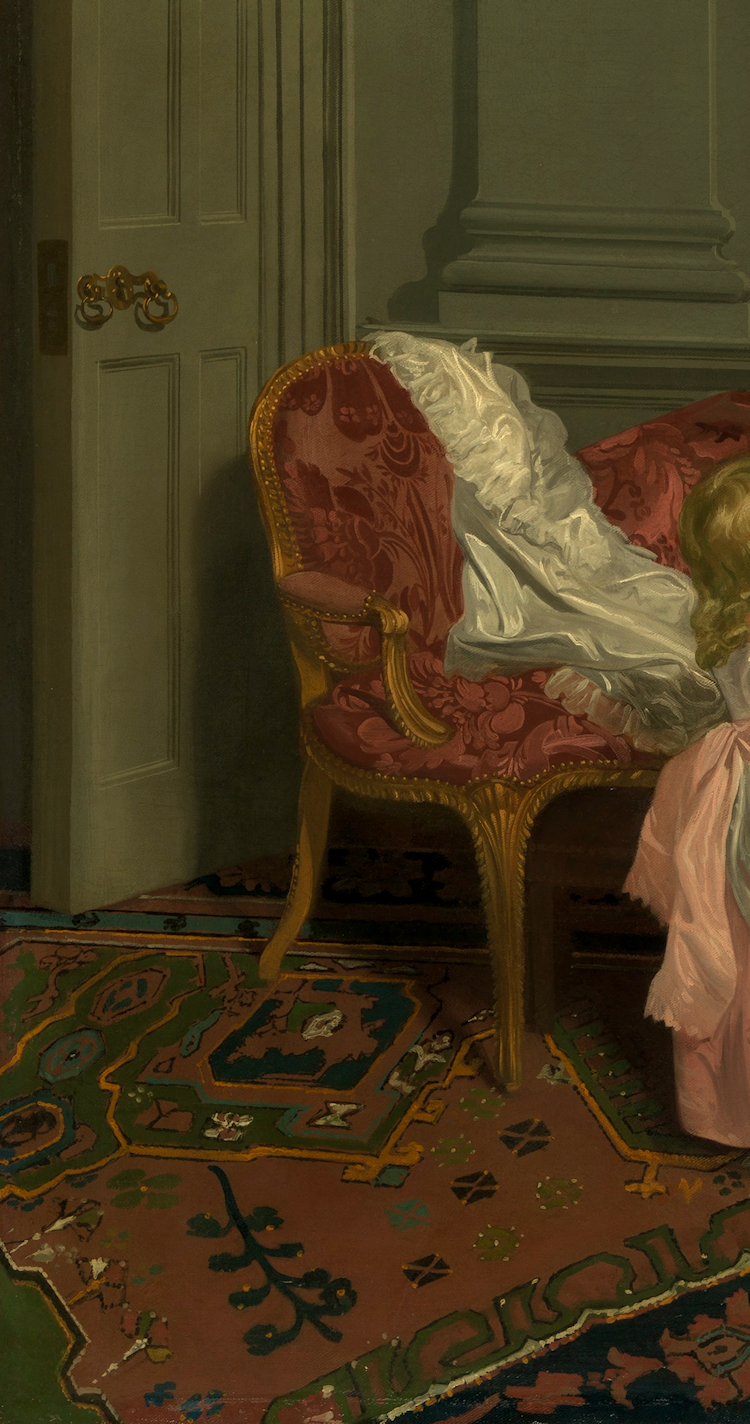 |
| Portrait of madame de L'Horme and her son, 1801. |
 |
| This work clearly shows the influence of Danloux's exposure to and admiration of the work of contemporary British portrait painters. |
 |
| Composition, light, color harmony, rendering - all first rate. |
 |
| The exquisite detail of the the spoon and bowl, reflected in the polished surface of the elegant table, all washed with the gold of the curtain.... |
 |
| The rendering of the cradle, its fringed drape and, especially, the glorious swathe of butter-colored satin, is quite wonderful. |
 |
| The artist's wife, Marie-Pierrette-Antoinette de Saint Redan, with their son, Jules, circa 1791. |
 |
| Her dramatic gesture - a request for quiet so as not to wake the child - doesn't make sense if one fails to recognize the cradle. |
 |
| The elegant toilette, fashionable furniture, the embroidery frame; all are a reflection of the aristocratic milieu of the artist's clientele. |
 |
| The brushwork is much looser here - ten years earlier - than in the later painting. |
***
Henri-Pierre Danloux (24 February 1753, Paris – 3 January 1809, Paris), French painter, mainly known for his portraits. Orphaned at an early age, he was brought up by his architect uncle. From the age of seventeen, he was a pupil of the genre painter Nicolas-Bernard Lépicié and later joined the studio of history painter Joseph-Marie Vien, whom he followed to Rome in 1775. He only returned to France in 1783, settling in Lyon - where he also married - but he moved to Paris two years later, where his reputation grew as a portraitist to the aristocracy. A royalist, Danloux emigrated to London in 1792 to escape the
French Revolution. There, at the height of his powers, he secured commissions from a number of British and French émigré patrons. But he was also quite influenced by such fashionable English portrait painters as Thomas Lawrence, John Hoppner, and George Romney. In 1793, he exhibited at the Royal Academy. In 1801 he returned to France, where he died eight years later, just weeks short of his fifty-sixth birthday.











































